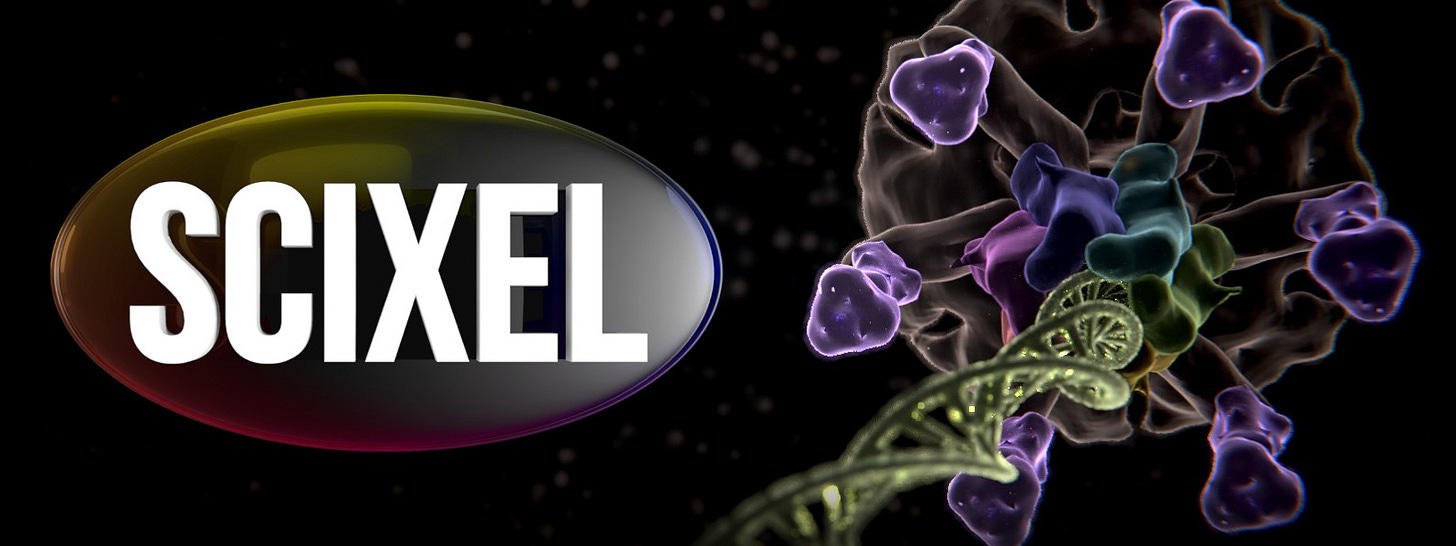There is nothing as spectacular as being at the forefront of science. This is exactly where we are, when talking scientific developments within the chemistry of the material graphene. Graphene was discovered as recent as in 2004 – and only 6 years later, the scientists Andrew Geim and Konstantin Novoselov were awarded the Nobel Prize in physics for their discovery. This highlights how amazing the material graphene is.
The special structure of graphene results in a number of amazing properties. Because of the symmetric structure of the material and its special double bond structure, graphene is a conducting material. In fact, it is the best conducting material at room temperature ever found. Essentially, electrons in graphene travel through a perfect graphene crystal without any energy loss. Imagine using this in your computers – there would be no energy loss to heating, and no cooling needed! This is one of the dreams of graphene research.
Over the last decade, a wide spectrum of chemistry research areas (organic, soft-matter, physical, surface, interfacial, electrochemistry, chemical biology, nanochemistry, theoretical, to name a few) increasingly contributed to a better understanding of the properties of graphene and other two-dimensional materials. It is to highlight the role and place of chemistry in the design, operation and efficiency of 2D molecular sensors (i.e., based on graphene most particularly, but also other two dimensional layered materials). Exploiting the full potential offered by graphene in sensing applications requires extensive fundamental studies of the behaviour of the surface and of the edges of graphene upon their interaction with biological systems (lipids, proteins, enzymes, DNA, RNA and ultimately biological cells), as well as a quantification of the measurable electronic response of the graphene surface (and edge respectively) caused by a biological stimuli such as the presence and the passage of a biomolecule.
Image Courtesy: Essentially three ways of functionalizing the surface of graphene to control its chemical properties: a) Non-covalent modification through weak interactions, b) intercalation of molecules between graphene sheets and underlying substrate and, c) covalent modifications of the graphene lattice.
The surface and the edges of graphene operate as sensors in two fundamentally different ways: in a typical solution-gated graphene field-effect transistor, the surface is sensitive to charge transfer conferred by a molecule in the vicinity of graphene and therefore could potentially detect a single molecule as a whole, while edges can be used as atomically flat electrodes that could transversally sense the precise structure and chemical composition of a biomolecule passing close to the edges. In both cases, biomolecules are being sensed, but the level of output information is different: surfaces can trap, detect and sense while edges can provide sequence information.
Image Courtesy: ICS-8/Forschungszentrum Jülich and Leiden Institute of Chemistry/Leiden University
This holds the potential that one can combine both and use the surface to selectively trap and identify, guide electrophoretically the trapped molecule towards the edge, and obtain molecular information; for example, using a transverse electrochemical current generated between two edges separated by a physical gap on the order of the lateral dimension of the biomolecule. To these ends, graphene has three fantastic properties: it conducts electricity outstandingly well, its edge is only a single carbon atom thin, and the fact that all the atoms are located on the surface makes graphene very sensitive to nearby environmental changes. Whatever the sensing scheme, chemistry plays an important role, most remarkably in aqueous solutions and physiological serum.
The Strength of GRAPHENE Explained . Courtesy Subject Zero Science
I would like to recommend the reader to read the article entitled: Introduction to "Chemistry of 2D materials: Graphene and beyond" (Paolo Samori, Xinliang Feng & Vincenzo Palermo)
The isolation and in-depth investigations on the fundamental physical and chemical properties of 2-dimensional (2D) materials like graphene have undoubtedly represented a cornerstone in materials sciences and nano-science. The unprecedented electrical, mechanical, thermal, optical, electrochemical and catalytic properties of 2D materials, often coexisting in a single material, have triggered a major scientific revolution with unparalleled efforts devoted towards their syntheses, functionalization and processing. The ultimate goal is to exploit 2D materials in a multitude of disruptive technologies, in particular to address the challenges our society is nowadays facing. Soon after the pioneering works of Geim and Novoselov on mechanically exfoliated graphene, the scientific interest branched out to both graphene produced using other top-down and bottom-up approaches, and to other 2D materials which exhibited diverse properties. For example, alongside the atomically thick semimetal graphene, mechanically robust and chemically stable 2D dielectrics (h-BN), semiconductors (unipolar such as black phosphorous and MoS2, and ambipolar like WSe2) and superconductors (NbSe2) could be generated.
MXenes (metal carbides and nitrides) represent another robust class of emerging 2D materials with notable electronic and electrochemical properties which can be achieved by the top-down delamination of the bulk MAX phase. While the properties of pristine 2D materials are undoubtedly outstanding, they are hardly tuneable. In this regard, the chemical approach via their covalent and non-covalent functionalizations open numerous opportunities as a powerful route to modulate their physical and chemical properties. It simplifies their processing, in particular in liquid media, and it enables to realize hierarchical composites and hybrid structures which not only combine “the best of two worlds” but also enable the emergence of new characteristics which are absent in the components themselves. More recently, chemical approaches to 2D materials expanded beyond the simple grafting of molecules to pre-existing nanosheets, achieving also the synthetic 2D covalent organic frameworks and 2D metal organic frameworks as bottom-up grown crystalline monolayers with chemical compositions and structures at will. This represented another compelling way to develop atomically thick materials with properties on-demand.
This themed issue on ‘Chemistry of 2D materials: graphene and beyond’ is focussed on the controlled functionalization of 2D materials in order to harness their fundamental properties and enhanced performance in applications in the fields of opto-electronics, energy, catalysis, biomedicine and sensing. It highlights some of the most enlightening approaches on the production of 2D materials (e.g. via electrochemical exfoliation), their processing, printing and manipulation, their covalent and supramolecular functionalization, and their application for energy generation and storage (supercapacitors and batteries), water filtration, optoelectronics, and biosensing.
This themed issue provides clear evidence of the interdisciplinary nature of the chemistry of 2D materials, interesting not only for the fundamental understanding on the modulable properties that can be achieved via a chemical approach, but also for its immense potential for technological breakthroughs.
Paolo Samorì is distinguished professor and director of the Institut de Science et d'Ingénierie Supramoléculaires (ISIS) at the Université de Strasbourg (France). His research interests include nanochemistry, supramolecular sciences, materials chemistry, and scanning probe microscopies with a specific focus on graphene and other 2D materials as well as functional organic/polymeric and hybrid nanomaterials for application in optoelectronics, energy and sensing. He is an associate editor of Nanoscale and Nanoscale Advances (Royal Society of Chemistry). He is a Fellow of the Royal Society of Chemistry (FRSC), Fellow of the European Academy of Sciences (EURASC), Member of the Academia Europaea, Foreign Member of the Royal Flemish Academy of Belgium for Science and the Arts (KVAB) and Senior Member of the Institut Universitaire de France (IUF).
Xinliang Feng is a full professor and the head of the Chair of Molecular Functional Materials at Technische Universität Dresden. His current scientific interests include bottom-up synthesis and top-down fabrication of graphene and graphene nanoribbons, 2D polymers and supramolecular polymers, 2D carbon-rich conjugated polymers for opto-electronic applications, new materials for energy storage and conversion, new energy devices and technologies.
Vincenzo Palermo is vice-director of the Graphene Flagship, one of the largest research projects ever launched in Europe. He is a research director of the National Research Council (CNR, Italy) and professor of Chalmers University of Technology (Sweden). He has published >160 scientific articles in international journals in chemistry and materials science, collaborating with key industrial partners in Europe (Airbus, FCA, Leonardo, BASF, Nokia, STMicroelectronics etc.). He won the Lecturer Award for Excellence of the Federation of European Materials Societies (FEMS), the Research Award of the Italian Society of Chemistry (SCI) and the Science dissemination awards of the Italian Book Association.
Don't hesitate to subscribe if you haven't already done so.
Regards and take care.
Born in 2012, Scixel is a project devoted to the improvement of the scientific comunication through the creation of graphical products: pictures, animations, graphs, posters, etc. Scixel consists of scientists with a deep knowledge in digital graphics but also with a long experience in giving talks, preparing posters and papers and other daily situations of scientific work.
We have focused our work into universities and research institutes all over the world: TuDelft (The Netherlands), NIMS (Japan), Basel University (Switzerland), Universidad Autónoma de Madrid, CNB or ICFO (Spain), to name a few.
Web: https://scixel.es/
If you are a company or an individual who would like to place your advertising in my newsletter you can contact me (email) and let me know your request of type of ad and number of newsletters you would like to place it. I will send you a budget as soon as possible.













